Rights and responsibilities - PRoW users and land managers
Rights and responsibilities - path users
When using public rights of way you should adhere to the countryside code (opens new window)
Public path users have responsibility not to cause disturbance or damage to private property including fences, crops and livestock (opens new window), or to land management operations.
When using shared use routes on a pedal cycle (opens new window), extra care should be applied, and cyclists should slow when approaching pedestrians or horse riders.
Route users (or parent/guardian/corers) must decide if a route is suitable for them.
Extra care is needed in some areas including riverside, cliff top and remote locations.
Where paths go through farms and farm land, additional care is needed in relation to animals and machinery. In particular, close reliable control is required over any dogs taken on paths through/ near farms to avoid conflict with farm animals (opens new window) and machinery.
Taking dogs on public rights of way is popular, but must be done sensibly and lawfully. Sunderland has dog control orders in operation. These define how many dogs can be taken by one person, and associated responsibilities. If you have a dog and take it for walks, it is recommended that you familiarise yourself with the dog control orders which should be read alongside the countryside code (opens new window) and informed advice (opens new window).
With dogs, please remember to 'bag it, take it away and bin it' - no one likes to step in it, it can be dangerous to sheep (opens new window) and cattle (opens new window), and it can contaminate crops, especially grass growing to be harvested as hay.
Rights and responsibilities - land managers
Land owners and managers have a range of responsibilities (opens new window) in relation to public access, principally not to cause obstruction or frustration (opens new window) to the public access rights.
If you exercise the right to plough (opens new window) a cross field path, statutory reinstatement periods must be complied with to avoid committing an offence (opens new window).
If you experience a problem with crime or antisocial behaviour in relation to your land, you can contact Northumbria Police (opens new window).
New sites and gates can sometimes (opens new window) be authorised where they are necessary to prevent the ingress or egress of animals, where land is being used for or being brought into use for agriculture of forestry or the breeding or keeping of horses. Their installation without Highway Authority authorisation under s.147 of the Highways Act 1980 is unlawful obstruction. Maintenance of stiles and gates is normally the responsibility of the land owner, who can request a 25% contribution (opens new window) of the reasonable costs of doing so from the Highway Authority.
In accordance with the 'least restrictive access' principle Tyne and Wear Rights of Way Improvement Plan (opens new window), the Highway Authority would prefer a gap before a gate before a stile, will normally require structures to comply with British Standard 5709-2006, and may propose a more accessible structure where appropriate (e.g. with additional steps for a stile).




